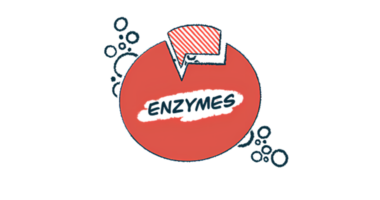Benefits seen with solengepras as solo Parkinson’s therapy: Trial
As monotherapy, candidate may help ease functional, nonmotor symptoms

When used as a solo therapy, solengepras (CVN424) — an oral treatment being developed by Cerevance — was seen to lessen both functional and nonmotor symptoms in people with early, untreated Parkinson’s disease.
That’s according to top-line results from the Phase 2 ASCEND trial (NCT06006247), which tested the therapy candidate in adults who had not yet been given any treatment for Parkinson’s.
The findings were presented at this year’s International Conference on Alzheimer’s and Parkinson’s Diseases and Related Neurological Disorders, held last week in Vienna.
The results add to prior Phase 2 data showing solengepras’ benefits as add-on therapy to levodopa, the gold standard treatment for Parkinson’s. Solengepras had been shown to help reduce complications linked to long-term levodopa use, such as dyskinesia, or sudden involuntary movements, and off periods, which are episodes of inconsistent symptom control.
“We are encouraged by the results of the Phase 2 ASCEND trial of solengepras as a monotherapy, which align with findings from our Phase 2 trial of solengepras as an adjunctive therapy, with both demonstrating benefits on patient-reported measures,” Craig Thompson, CEO of Cerevance, said in a company press release.
Solengepras being tested as both Parkinson’s solo and add-on therapy
Parkinson’s is caused by the progressive degeneration of dopaminergic neurons, which are the nerve cells responsible for producing dopamine, a brain chemical messenger crucial for motor control.
Aaron L. Ellenbogen, a neurologist and the primary investigator of the ASCEND trial, noted that, “for people with Parkinson’s disease, dopaminergic therapies are the standard of care as they reduce tremors, stiffness, slowed movement, and other symptoms.”
There are, however, “crucial treatment gaps in addressing functional impairments and nonmotor symptoms,” Ellenbogen said.
Solengepras is a small oral molecule that can cross into the brain and affect nerve cells in the striatum, a region essential for controlling voluntary movement. This experimental treatment specifically targets and blocks GPR6, a protein receptor found in certain nerve cells within the striatum. By inhibiting GPR6, solengepras aims to produce effects similar to levodopa without directly affecting dopamine levels, this way reducing negative side effects, such as dyskinesia.
The ASCEND trial evaluated solengepras in 64 people, ages 30 and older, who hadn’t previously received dopaminergic or other Parkinson’s therapies. The participants were randomly assigned to receive either oral solengepras, at a dose of 150 mg daily, or a placebo for three months.
The study’s main goal was to assess solengepras’s ability to lessen Parkinson’s motor symptoms and their impact on daily activities using Parts II and III of the Movement Disorder Society’s Unified Parkinson’s Disease Rating Scale, known as MDS-UPDRS.
Part II is a patient-reported measure that captures how motor symptoms affect an individual’s ability to perform everyday tasks, while Part III is a clinician-administered assessment that evaluates the severity of motor symptoms, including tremors, rigidity, and bradykinesia.
No serious adverse events reported in trial of solengepras as monotherapy
In addition to motor symptoms, secondary endpoints, or goals, included assessments of self-reported nonmotor symptoms that impact daily life, such as mood, motivation, and sleep disturbances. These were measured using Part I of the MDS-UPDRS. Additionally, the Non-Motor Symptoms Scale measured overall symptoms severity, and the Epworth Sleepiness Scale evaluated daytime sleepiness, a common Parkinson’s nonmotor symptom.
Solengepras’ safety profile, including adverse events and overall tolerability, was also assessed.
The improvements in functional and nonmotor symptoms observed in the patient-reported measures of the ASCEND trial suggest that solengepras could be a promising option for managing nonmotor symptoms without the distressing side effects associated with conventional dopaminergic therapies.
Patients treated with solengepras demonstrated a small, nonstatistically significant lessening in motor symptoms compared with those who received the placebo. However, the company noted that a lack of differentiation between treatment groups in the clinician-administered Part III neurological exam of the MSD-UPDRS, which looks at the physical signs of Parkinson’s at one point in time, may have contributed to this outcome.
Trends in improvements were observed in patient-reported measures, the team noted, suggesting potential benefits in both functional and nonmotor aspects of Parkinson’s.
Solengepras was well tolerated, with no serious adverse events reported. Fewer adverse nonmotor symptoms occurred in the treatment arm compared with the placebo.
“The improvements in functional and nonmotor symptoms observed in the patient-reported measures of the ASCEND trial suggest that solengepras could be a promising option for managing nonmotor symptoms without the distressing side effects associated with conventional dopaminergic therapies,” Ellenbogen said.
Solengepras is now being evaluated in the Phase 3 ARISE trial (NCT06553027), which is assessing its safety and efficacy in addition to levodopa and other Parkinson’s medications. Topline data from this trial are expected in the first half of 2026.








